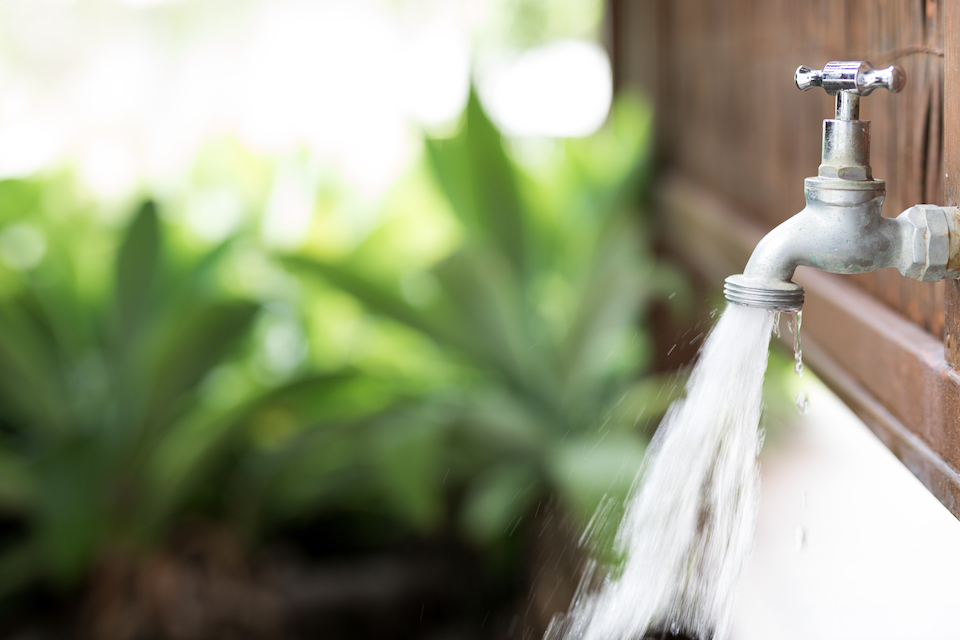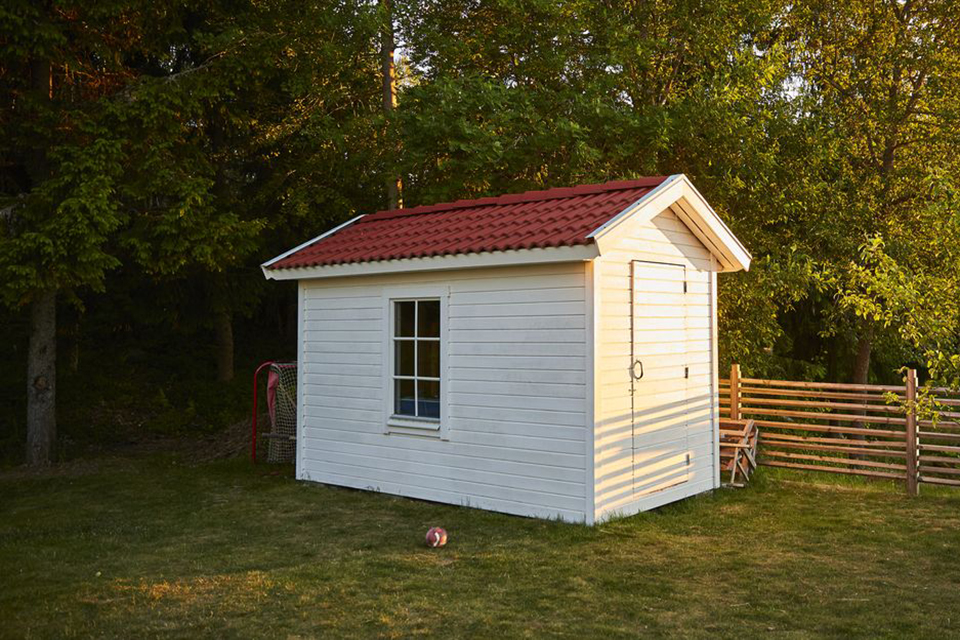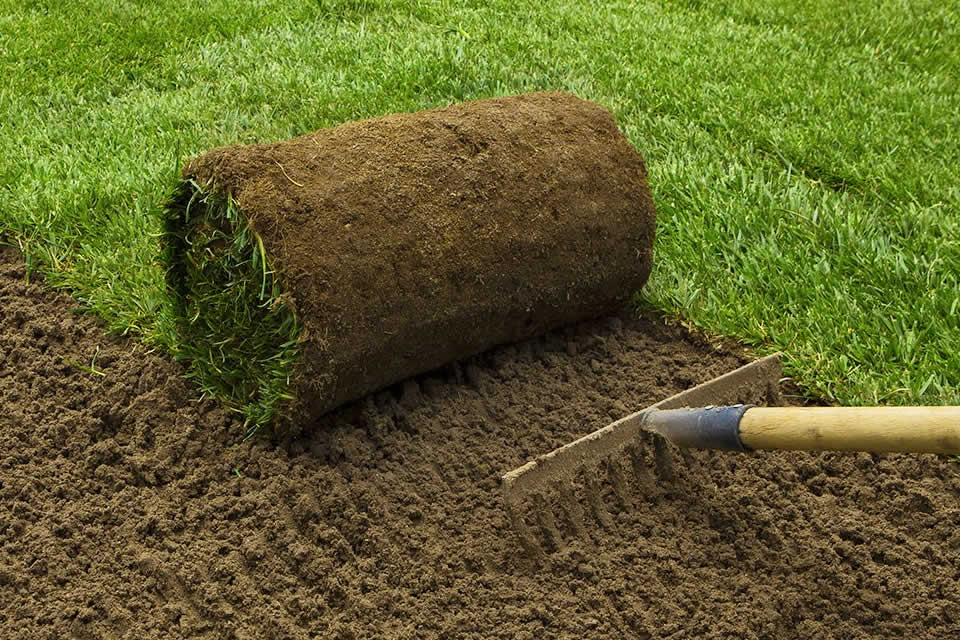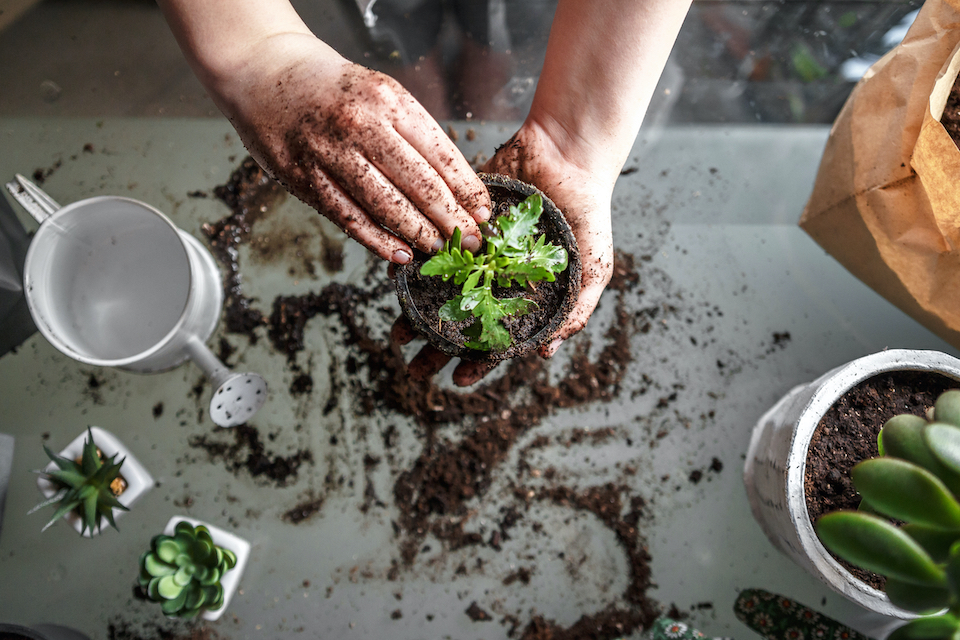How Much Does it Cost to Install an Outdoor Tap?
Outdoor taps have the added benefit of being able to be installed inside an adjacent garage if desired. This makes the process easier to connect the hose to the tap from the hose pipe storage location, eliminating the need for any cumbersome hose carrying.
Here we will go through the different costs to install an outdoor tap, so you know what to expect.
An outside tap installation can cost between £80 and £150, depending on the type of tap and where it is installed. It costs around £80 - £150 to have it installed on the kitchen sink wall, while it costs around £180 - £250 to have it installed on a different wall.
Installing an outside tap at the bottom of the garden is much more expensive, with prices starting at around £300+.
If you decided to implement your garden tap on a different wall of the house, you would need to do some extensive plumbing work, which could cost you £1,000 or more depending on the extent of the plumbing work required.
The closer you can have the tap to the water pipes pipe, the better the water pressure from the tap.
You can also install a tap as a standalone feature anywhere in your garden. This, however, would necessitate some plumbing work to allow water to flow properly to the tap. The water pipes leading to your standalone tap will need to be installed below ground level to avoid freezing in the winter.
The cost of installing an outside tap can vary depending on where you live in the United Kingdom. London's labour costs are significantly higher than those in the UK's north. For those living in London, labour costs can increase the overall cost of an outside tap installation.
The final cost will be determined by:
- The location of the water tap
- How far away is the feed water source from the tap?
- How many taps do you want to be installed?
- The type of tap you select
Whether you install a tap lock or a lockable protective box, the results will be the same.
If you contact a local plumber to install an outside tap, he should be able to provide a quote almost immediately because this is a very common or standard request. In terms of work and labour charges, it usually only takes an hour or two.
Outdoor Tap Prices
The table below will break down the outdoor tap prices:
| Job | Cost |
|---|---|
| Outside tap installation | £80 - £150 |
| Kitchen sink wall installation | £80 - £150 |
| Installed on a different wall | £180 - £250 |
| Outside tap at the bottom of the garden | £300+ |
| Different wall | £1,000 |
- How Much Does it Cost to Install an Outdoor Tap?
- What are the Supply Costs for an Outdoor Tap Installation?
- What are the Additional Costs of Fitting an Outdoor Tap?
- Tradesmen Costs for an Outdoor Tap Installation
- How Long Does It Take to Fit an Outdoor Tap?
- Types of Outdoor Taps
- How Much Does It Cost to Remove an Outdoor Tap?
- FAQs
- Sources
What are the Supply Costs for an Outdoor Tap Installation?
If you want to install your own outside tap, you'll need to buy all the pipework and fittings, as well as PTFE tape and a drill large enough to go through the wall. This should not set you back more than £60 - £80.
We'll go over the supply costs for an outdoor tap here, so if you decide to do it yourself, you'll be able to find everything you need.
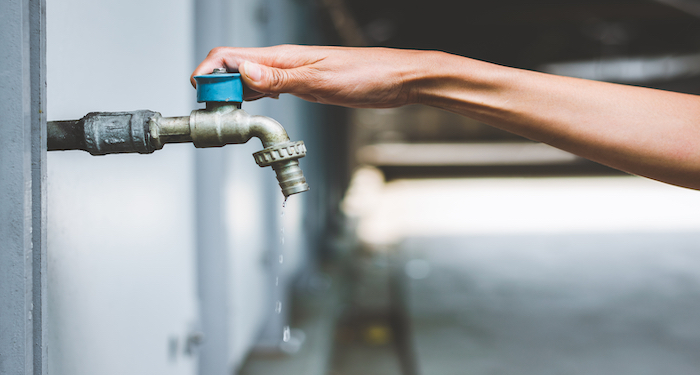
The cost of an outdoor tap alone ranges between £6 and £10 on average. A bib tap will cost between £15 and £30, while a standard tap will cost between £5 and £20.
A thermostatic mixer valve typically costs between £20 and £50, while a backplate costs between £5 and £15.
The cost of materials is usually around £14 - £20 if you are within a metre of your main water supply. Outside tap kits are also available.
An outdoor tap kit includes a tap as well as everything you need to install it. These garden tap kits typically cost between £20 - and £30.
The cost of the supplies alone is only a fraction of the total cost of the job. From the prices spoken about, much of the funding for installing an outside tap is in the labour costs.
You might just want to consider purchasing an outdoor tap kit from a reputable retailer, which can be less expensive than purchasing individual components, typically costing between £20 and £35 – but make sure to research before purchasing and ensure that the kit meets British Standards.
Make sure you have a high-quality drill capable of drilling holes into masonry walls. To get the half-inch copper pipe through, you'll need to use a hammer drill to make a nice clean hole.
After you've finished drilling the pipe hole, you'll need to drill holes for the screws that will hold the tap to the wall. When the hole is finished, insert the required number of wall plugs.
Wall plugs are available at most local hardware stores. After that, attach the tap to the copper pipe, utilising PTFE tape to create a strong bond.
Temporarily cover the stop of the tap with tape. Insert the pipe through the hole after placing the rubber gasket on the tap. The rubber gasket will form a seal with the wall.
If you need to cut the pipe after inserting it through the hole, simply cut it square with a pipe cutter and file the smooth edges down. Other tools can be used, but pipe cutters are the best option.
Connect one end of the hose to a copper pipe. Before you begin, make sure the tap is turned off. Then, using the equipment included in the tap kit, tighten the hose to the copper.
The supply costs will be listed in the table below:
| Supply | Costs |
|---|---|
| Overall | £60 - £80 |
| Bib tap | £15 - £20 |
| Standard tap | £5 - £20 |
| Thermostatic mixer valve | £20 - £50 |
| Backplate | £5 - £15 |
| Garden tap kits | £20 - £35 |
What are the Additional Costs of Fitting an Outdoor Tap?
There are a few factors to consider when determining the cost of installing an outdoor tap, as they may have an impact on your budget.
In this section, we will go over the various extra costs that may increase the overall cost of your installation.
Garden Waste Removal
The cost of having garden debris removed ranges between £70 and £200. The cost, on the other hand, will be determined primarily by the size of your garden and the amount of waste that needs to be removed.
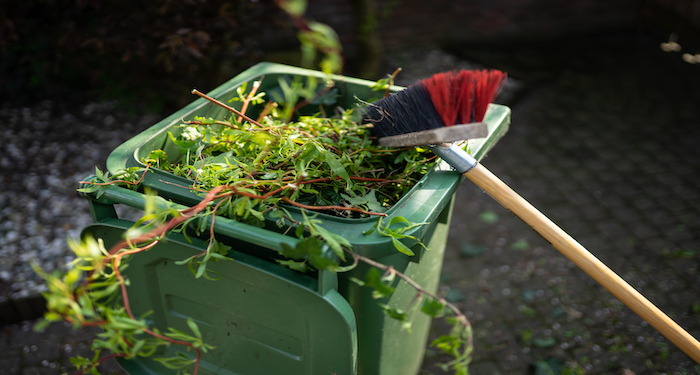
Green waste removal is estimated to cost between £100 and £150. The same can be said for brown waste removal. The cost of collecting soil trash is approximately £0.15 per kg.
If you have a small amount of garden waste that needs to be disposed of on a regular basis, see if your local council provides a garden waste collection service. These are either free of charge or cost between £150 and £200 per year.
Some garden waste removal companies may charge based on the weight of the waste. If you have a greater trash disposal requirement or can consolidate services, you can reduce your costs per tonne.
As a result, when you hire a business to remove your trash, heavy items such as dirt and bricks will be charged by the weight.
If you would like further information, please refer to our guide on the costs of garden clearance and waste removal.
Render a House
In the United Kingdom, the average cost of cladding a house range between £1500 and £2100. When it comes to external cladding materials, covering a single wall of a gable roof house with timber cladding could cost around £1300 to £1600, £1300 to £1600 with stone cladding, £1300 to £1700 with uPVC cladding, and £1400 to £1600 with metal cladding.
Covering a wall on a gable roof house costs around £1600 to £2000 for a terraced house, £3100 to £3500 for just a semi-detached house, £5800 to £7200 for one detached house, and £725 to £1025 for an apartment, depending on house size/type.
The labour cost to render the front of a semi-detached house will be around £780 to £2250, while the installation costs for cladding will be around £300 to £600 to cover a single wall on an ordinary gable roof house.
The labour costs for rendering a 5m2 brick wall range from £190 to £380, with costs ranging from £760 to £1140 for a terraced house, £1140 to £1710 for a semi-detached house, £1330 to £1260 for a detached house, and £50 to £200 for an apartment.
A renderer and a joiner will most likely charge between £130 and £250 per day or between £16 and £31 per hour.
If you would like further information, please refer to our guide on the costs of rendering and external cladding.
Location of Tap
If you need a tap installed on a wall other than the one directly behind your sink (which is the typical location for an external tap), you will inherently need more work done, such as more pipework being added or, in some cases, floors being removed and reinstalled to accommodate the pipework (if, for instance, your sink is located on a kitchen island).
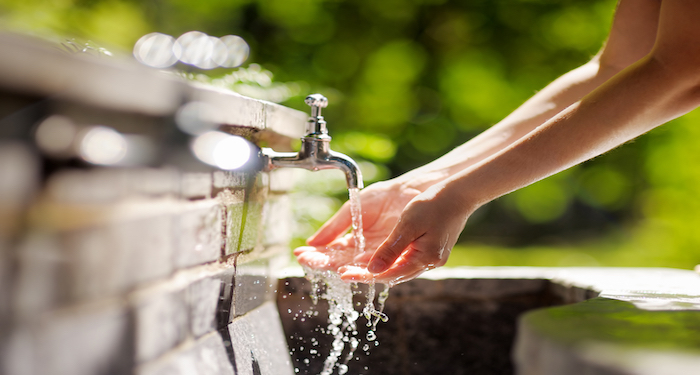
It is recommended that if you think your installation will be complicated, you request a visit from your plumber before agreeing to the task so that they can assess the layout and provide an accurate quote for the job to be done.
Thermostatic Valves
The cost of installing a hot or cold tap is the same; however, an outdoor hot water tap is also not temperature-controlled and will necessitate the installation of an additional thermostatic valve if you do not want to risk scalding.
This is an important consideration in houses with children who may use the faucet. Each thermostatic valve costs around £20.
Ease of Access
If your plumber arrives and needs to spend time moving objects out of the way to access the tap installation location, you will be charged for their time – You must always prepare the area for a hired tradesperson before their arrival when possible.
Location
Depending on where you live, the cost of installing a garden tap varies. Most garden services are more expensive in London and the South-East than in the North or West of the UK. Of course, larger garden service companies will charge more for their services than local self-employed gardeners.
Tradesmen Costs for an Outdoor Tap Installation
Most of the time, labour costs can be a massive impact on the overall cost of your job. Therefore, you might want to know how much it will cost you to hire someone to install an outdoor tap.
Here we will go through the different labour costs included when installing an outdoor tap so you know what to expect.
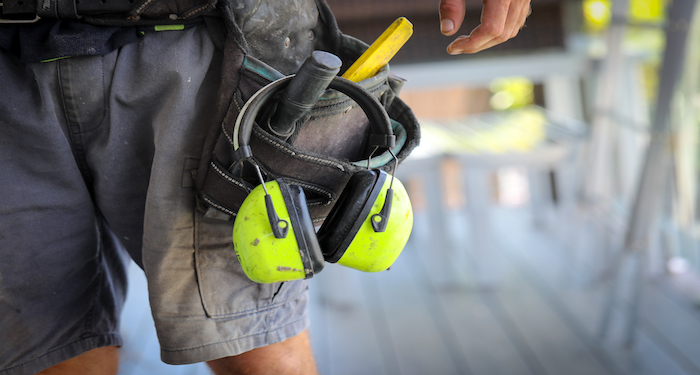
The cost of hiring a plumber varies according to where you live in the country and the type of service you provide. According to our data, the average plumber charges between £40 and £80 per hour.
Plumbers' day rates range from £180 to £350 per day but expect to pay 20-30% more per day if the plumber is installing an appliance in your home.
Most plumbers can install an outside tap on your external wall adjacent to the kitchen, assuming it is a simple process, for around £40 – 60 per hour, or the similar £80 – £120 in labour charges for a larger job usually will cost around £30 – £100 depending on location and accessibility.
The average cost quoted for a simple garden tap installation was £100.
Access to the site can increase costs, especially if your plumber needs to move furniture to get to the tap site – so make sure any furniture or clutter is removed from the site and the stopcock is located before the plumber arrives.
The fittings for installing a tap on the "kitchen sink" wall will cost £115. If you want the tap in an inconvenient location (with no adjacent internal supply pipework), it could cost between £210 and £300.
Create a new gully and connect it to an existing manhole to install a tap outside the back door. The building inspector is legally required to supervise this. So, it will take two labourers and cost between £875 and £900.
To install a garden tap at the bottom of the garden. It will take two labourers to "surface run" the supply pipe and have it freeze every winter these costs between £345 and £400.
The work described above, but with the supply pipe buried 900mm underneath the surface to prevent freezing. This may require two men and will charge £1175.
Prices vary depending on where you live in the United Kingdom. The cost of living in London and the southeast is frequently higher than in other parts of the country.
The final plumber cost will be determined by travel and transportation, as well as the ease of access to your property and any fees or costs associated with parking their vehicle at your home.
The table below will break down the tradesmen's outdoor tap installation cost.
| Labour | Cost |
|---|---|
| Plumber | £40 - £80 per hour |
| Plumber day rate | £180 - £350 |
| Standard outdoor tap installation | £40 - £60 per hour |
| Larger outdoor tap fitting | £80 - £120 |
| Installing a tap on the "kitchen sink" wall | £115 |
| No adjacent internal supply pipework tap installation | £210 - £300 |
| Create a new gully and connect it to an existing manhole | £875 - £900 |
| Garden tap at the bottom of the garden | £345 - £400 |
| Supply pipe buried 900mm underneath the surface | £1,175 |
How Long Does It Take to Fit an Outdoor Tap?
In most homes, installing an outside tap is simple, with the most difficult part being possibly drilling a hole through the exterior wall for the pipe to exit through.
Because the mains water is usually taken from the cold tap on the sink, it is usually easiest to install the outside tap on a wall outside the kitchen area.
This ensures that you get the adequate water pressure when using a hose; the tap must be connected to the water mains rather than a tank supplied gravity feed. Therefore, the installation of an outdoor tap must be done correctly, which can take up some time.
But how long does it take to fit an outdoor tap?
As a basic rule, most plumbers would be able to install an outside tap on your external wall adjacent to the kitchen in 1 – 2 hours if the process is simple.
If you have a more complicated job, like installing a water supply and taking a water supply from another part of the house, or installing an outdoor mixer tap, it will take longer, but it is still possible to complete.
It usually takes "half a day" to install a tap on the "kitchen sink" wall; however, if you want the tap in an awkward location (with no adjacent internal supply pipework), it could take him all day.
This job requires two men and two days to install a tap outside the back door, build a new gully, and connect it to an existing manhole. To install a garden tap at the bottom of the garden. If you "surface run" the supply pipe and let it freeze every winter, it will take two men one day to complete.
The work described above, but with the supply pipe buried 900mm below the surface to prevent freezing. This could take two men four days.
The table below will break down the duration to fit an outdoor tap.
| Job | Duration |
|---|---|
| To install an outside tap on your external wall | 1 – 2 hours |
| To install a tap on the "kitchen sink" wall | Half a day |
| To install a tap in a no adjacent internal supply pipework position | One day |
| To install a tap outside the back door | Two days |
| To install a garden tap at the bottom of the garden | One day |
Types of Outdoor Taps
Aren't taps just taps? Don't they all do the same thing? So, what exactly is the distinction between interior and exterior ones? Their inner workings, on the other hand, are markedly different from those of their inside cousins. Why? Because there isn't a shortage of hot water in this house.
On the other hand, they must be able to deal with adverse weather conditions without becoming ill or wreaking havoc during the winter.
Fortunately, there are a variety of outdoor tap types to choose from. We will go over the various types of outdoor taps and their benefits and drawbacks.
Traditional Outdoor Taps
Traditional compression valves are the ones that everyone is familiar with (unless you live in a freezing climate where these would be ineffective).
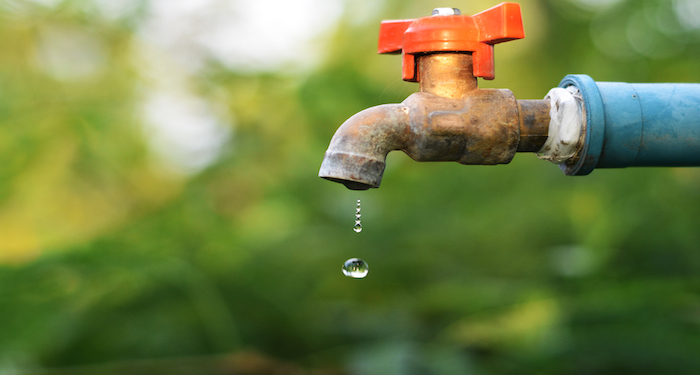
When you turn the handle to the left, they allow water from your house to pass through the faucet's opening. As a result, turning it in the opposite direction will close it and bring the stream to a halt.
Pros:
- Affordable
- Easy to use
Cons:
- Not good for colder countries
Frost Proof Outdoor Taps
If you live somewhere extremely cold, these are ideal. Traditional compression valve faucets (such as the one we just discussed) cannot withstand harsh snow, frost, and cold wind. As a result, their frost-proof sibling was created.
They use a metal tube that extends into your house or outbuilding to prevent the water from freezing and damaging your pipes or valves. When the faucet is turned off, the valve keeps the water warm enough to prevent it from freezing.
If it's properly positioned, the water will drain outside, leaving no water in the pipe to cause damage.
When you turn on a frost-proof tap, the water may take a few seconds to come out. This is completely normal and is caused by the valve being located further inside the pipe than traditional faucets.
Pros:
- Suitable for cold countries
Cons:
- It can break if not maintained
Bib Outdoor Taps
These are the most common forms of outdoor taps found on residential properties, and they are also referred to as 'hose bibs' if they have threading on the end that allows them to be attached to a hosepipe.
When the handle is turned, an internal compression valve blocks the flow of water. Turning the handle to the left releases the valve and allows water to flow through the spigot, while turning it to the right screws the valve down and closes the compression nozzle to turn off the water flow.
These types of outdoor taps are typically installed on the backside of a property in the backyard, though they may also be installed on the side or front of the property in some cases.
They are an excellent location for washing hands after a day in the garden or filling a watering can to irrigate plants. Hose bibs with threaded heads that can be screwed onto a hosepipe make it simple to water the lawn or wash the car.
Other garden irrigation systems, such as sprinklers, could also be connected to a hose bib via a hose. Bib taps are mostly made of plastic or metal, and the material from which they are made has a significant impact on their price.
The most cost-effective spigot will be zinc, brass, or steel, while the most expensive will be an ABS or die-cast aluminium hose bib.
The main disadvantage of these outdoor faucets is that they do not perform well in cold temperatures because they are not weather-proof. There may be water left inside the faucet that freezes in cold temperatures, causing damage to the spigot as the ice expands.
Pros:
- Easy to use
- It can be connected to different hoses
Cons:
- Not suitable in cold temperatures
- Expensive
Ball Valve Outdoor Taps
This type of tap is found both inside and outside of buildings. Within the home, it is most frequently used as a shut-off valve in plumbing because the way it works prevents any amount of water from seeping through or dripping out; it is either on or off, with no in-between.
The ball valve tap gets its name from the fact that it controls water flow with a ball.
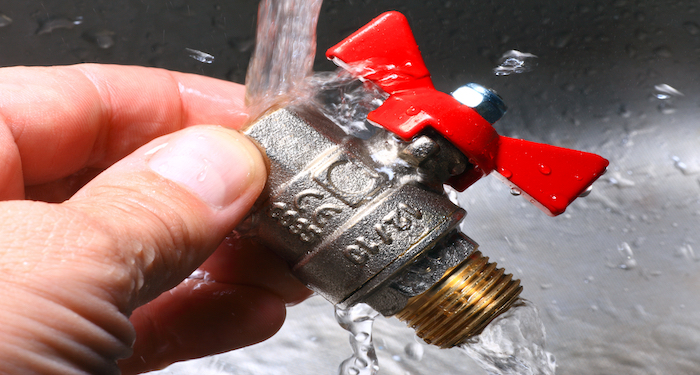
Inside the tap, there is a hole in which a ball sit. When the handle is turned to the on position, the ball is shifted to the side, and the hole allows water to pass through.
When the handle is twisted to the off position, the ball rotates to the opposite side, and the hole is plugged to prevent water from entering.
This type of outdoor tap is common in backyards because various levels of water flow are not required for landscaping, and a simple 'on' or 'off' switch suffices.
They are usually attached to the back of a house and linked to the water pipes. Ball valve taps are typically made of brass and are relatively inexpensive to purchase.
Pros:
- Water control
- Easy to use
- Affordable
Cons:
- Not many styles
Anti-Siphon Outdoor Taps
These taps have a component that prevents water from flowing back into the house through the water pipes after it has reached the outdoor faucet.
If you use your home's taps for drinking water, it's a good idea to make sure your outdoor faucet is anti-siphoning to prevent contaminated water from getting into your kitchen tap.
When water sits in your outdoor tap, it is vulnerable to bacteria or dirt that may enter the water source through the spigot's mouth. If this water can then flow back into your home and into the pipes that supply your drinking water, you may be drinking or cooking with contaminated water.
As a result, some authorities require residents to have an anti-siphon faucet installed as the outdoor tap on their property.
If you already have a non-anti-siphoning outdoor tap, you can easily upgrade it to prevent water backflow. Simply purchase a screw-on anti-siphoning valve, also known as a vacuum breaker, to accomplish this. This component simply screws onto the faucet's spout and transforms it into an anti-siphon faucet.
Pros:
- It is vulnerable to bacteria or dirt
- Easy to install
Cons:
- Expensive
How Much Does It Cost to Remove an Outdoor Tap?
An outdoor tap may need to be removed from time to time, for example, if it is flawed or you are planning a home extension in the area where the tap is connected. Whatever the reason, it should be a relatively simple task for your neighbourhood plumber or building tradesman to complete.
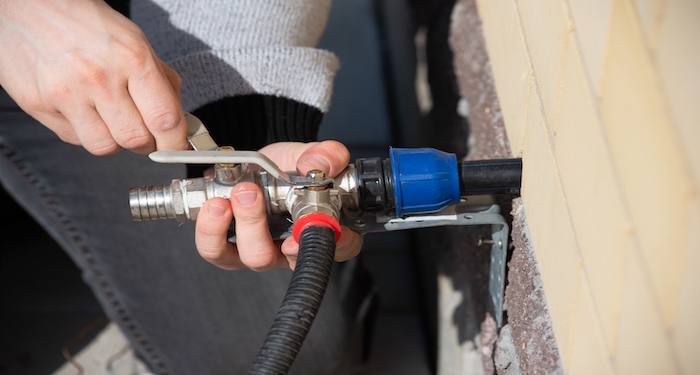
If a replacement is required, your plumber will simply remove and replace the external tap; this is accomplished by gripping the extendable spanner on the neck of the tap and twisting; grips may be required to hold the wall mount if the joint is especially tight.
If you decide to do the work yourself, a replacement tap should cost between £10 and £15 in most cases. Alternatively, a plumber may complete the work for you for as little as £30 - £50 .
If the external tap must be completely removed, the tap will be removed using the same procedure. Internally, the pipework leading to the tap must be removed to ensure that no contaminated water remains in the system.
Because the process should take less than an hour, a labour charge of around £40 – £60 should be expected.
FAQs
Q: How do you fix a leaking outdoor tap?
- Loosen the packing nut with the adjustable wrench and remove the valve stem)
- Using your flat-head screwdriver, remove the screw at the valve's end
- Using the screwdriver, carefully remove the old washer after the screw has been removed
- Using the brush, clean the washer seat to remove any residue that has clung to it before inserting the new washer
- Tighten the screw
- Apply plumber's tape to the faucet threads for a secure fit, then replace the valve. Use your adjustable wrench to tighten the packing nut
Q: What height should an outside tap be?
A: Install an outside tap at least 50 cm above the floor, with enough space underneath for a large bucket or watering can. It is also critical that the outside tap is higher than the point at which it is connected to an existing water pipe in the house so that it can be drained in the winter to prevent freezing.
Q: Is it easy to install an outdoor tap?
A: Using a complete kit is the simplest way to install or fit an outside tap or garden tap.
Q: Does an outdoor tap need a drain?
A: Outside taps do not need a drain, but they should have adequate drainage below. It is best to practice installing or having a nearby drain.
Q: How do you keep an outdoor tap from freezing?
- Close the shut-off valve inside
- Turn off the water supply
- Wrap the outside faucet in insulation
- Cover the faucet with an insulated cover
- Remove the garden hose as well

